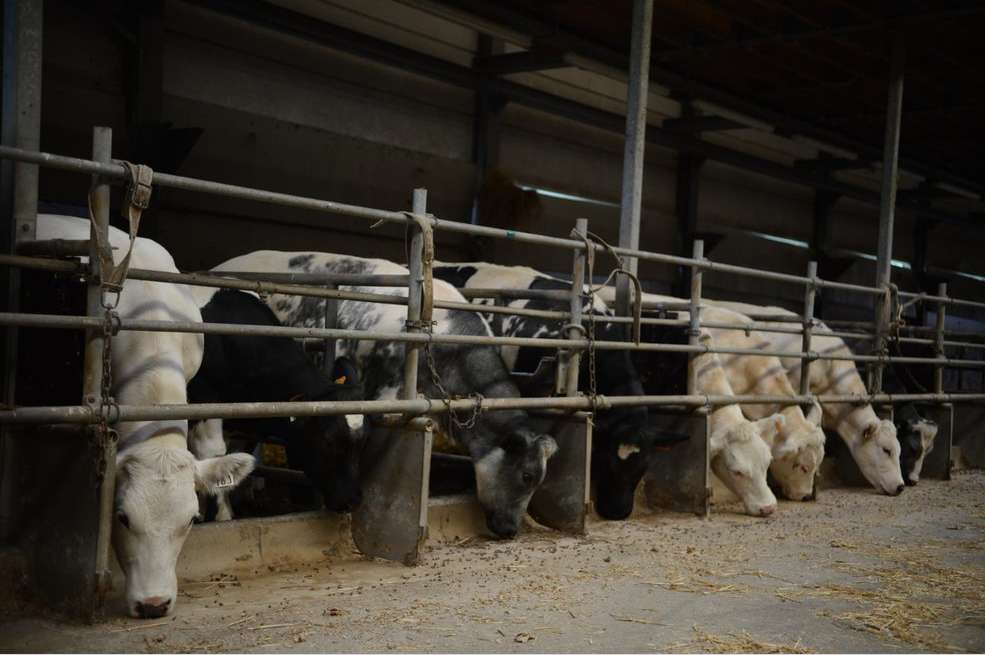In modern beef cattle feeding, subclinical acidosis is one of the most dangerous and common diseases. The word ‘subclinical’ says it all - there are no evident signs. When clinical signs manifest, it is too late and animals’ performance is already compromised. If the subclinical acidosis is prolonged, it becomes chronic acidosis with serious consequences. The clinical form varies from sudden death to a light feed depression. The symptoms of ruminal acidosis include laminitis as well as dehydration, rumen atony, diarrhea and a lot more. All symptoms affect the economics of the feedlot and therefore gain attention.
 Bulls at feed bunk (Photo: K. Goosens)
Bulls at feed bunk (Photo: K. Goosens)Economics of feedlot beef production dictate that cattle must gain weight at their maximum potential rate this easily sets the stage for grain overload in feedlot cattle. The result is a digestive disorder called ruminal acidosis. Main causes of this fermentation disorder in the rumen are high nonstructural carbohydrates intake (High grain-based diet, small particles), inadequate ruminal buffers capacity (Increase in volatile fatty acids, Loss in salivation capacity (including chewing activity), Low crude protein in the diet, Low neutral detergent fiber) and bad bunk management (Interruptions in normal feed intake patterns, diet changes). Therefore, the two pillars in acidosis control are management and nutrition.
One way to diagnose subclinical acidosis is through blood analysis, evaluating the parameters of zinc, copper and ceruloplasmin. However, blood analysis is not possible in several explorations, so the observation of animal behavior is the first resource. Some of the changes are lethargy or irritability, anorexia phases alternating with periods of normal intake, teeth grinding and periods with soft stools.
The main challenge is doing the diagnosis in time. If acidosis becomes chronic, the animal's performance potential is lost, generating great economic losses due to the rapid oxidation of meat resulting from sick animals, which for this reason are not commercialized.
The key factor is prevention using management and nutrition. Diagnosis of subclinical acidosis is extremely difficult, but not impossible, through blood analysis and observing animal behaviour. Farmers should always act to prevent the occurrence of acidosis because the treatment is very difficult and expensive and in some cases there isn't one.
Literature:
- Riera, J. (2014): Acidoses em novilhos. https://issuu.com/ruminantes/docs/ruminantes_2 (Page 44-45)
- Hernández, J. (2014): Ruminal Acidosis in Feedlot: From Aetiology to Prevention https://doi.org/10.1155/2014/702572
This Research Innovation has an impact on:
- Socio-economic resilience: By controlling the incidence of acidosis in the farm, the number of cases will reduce and there will be less economic losses through the oxidized meat
- Animal Health and welfare: Subclinical acidosis in many cases will evolve to chronic acidosis, which will deteriorate the animal's health through weight loss, laminitis, hepatic abscesses, enterotoxaemia with meteorism, tail necrosis and arthrosis of the posterior third. By controlling the appearance of this metabolic disease the animals will have better health and welfare